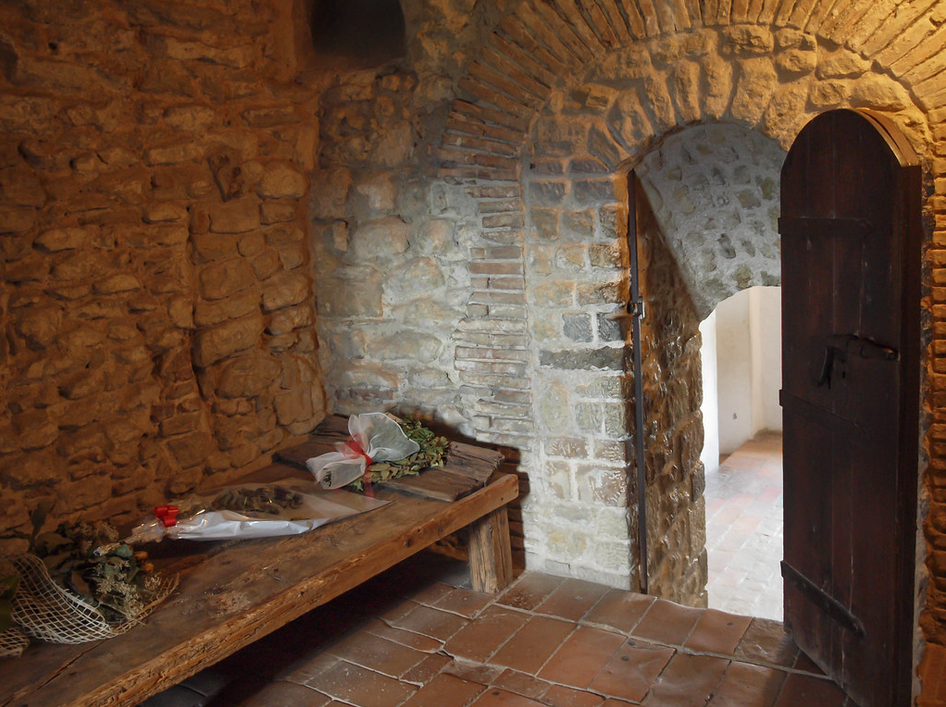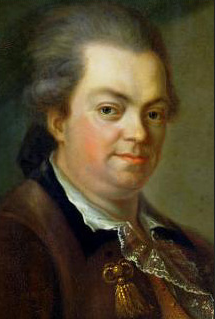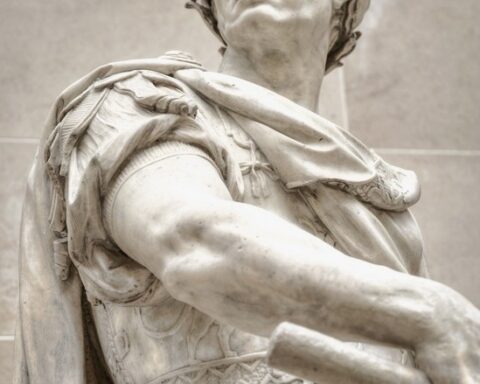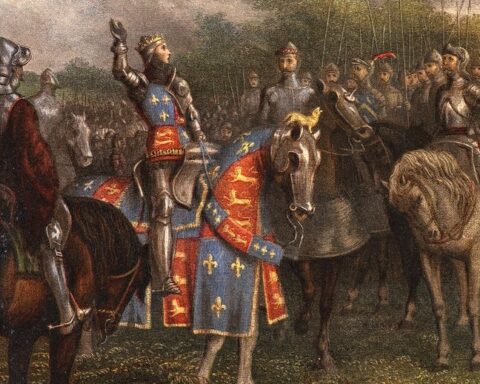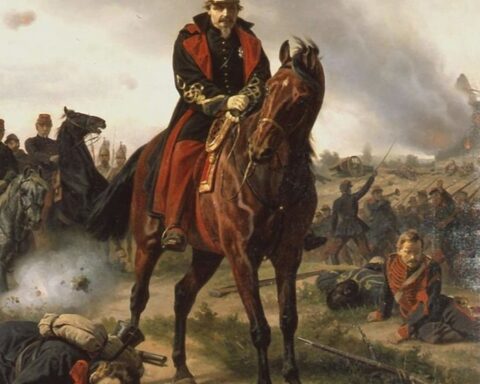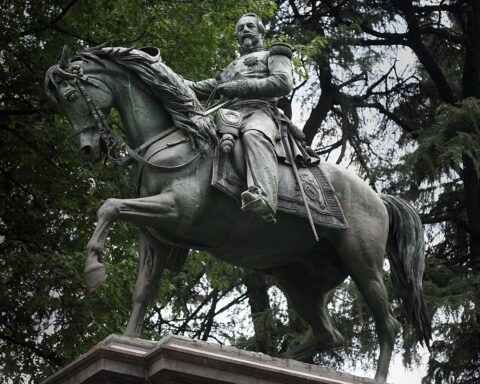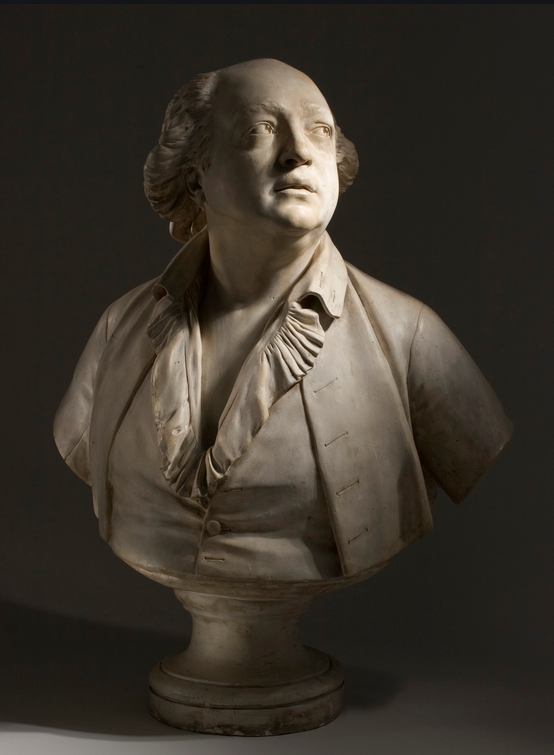
Editor’s note: The following is extracted from Famous Imposters, by Bram Stoker (published 1910).
The individual known to history as Comte Cagliostro, or more familiarly as Cagliostro, was of the family name of Balsamo and was received into the Church under the saintly name of Joseph. The familiarity of history is an appanage of greatness in some form. Greatness is in no sense a quality of worth or morality. It simply points to publicity, and if unsuccessful, to infamy. Joseph Balsamo was of poor parentage in the town of Palermo, Sicily, and was born in 1743. In his youth he did not exhibit any talent whatever, such volcanic forces as he had being entirely used in wickedness—base, purposeless, sordid wickedness, from which devolved no benefit to any one—even to the criminal instigator. In order to achieve greatness, or publicity, in any form, some remarkable quality is necessary; Joseph Balsamo’s claim was based not on isolated qualities but on a union of many. In fact he appears to have had every necessary ingredient for this kind of success—except one, courage. In his case however, the lacking ingredient in the preparation of his hell-broth was supplied by luck; though such luck had to be paid for at the devil’s usual price—failure at the last. His biographers put his leading characteristics in rather a negative than a positive way—“indolent and unruly”; but as time went on the evil became more marked—even ferae naturae, poisonous growths, and miasmatic conditions have to manifest themselves or to cease to prevail. In the interval between young boyhood and coming manhood, Balsamo’s nature—such as it was—began to develop, unscrupulousness working on an imaginative basis being always a leading characteristic. The unruly boy shewed powers of becoming an unruly man, fear being the only restraining force; and indolence giving way to wickedness. When he was about fifteen he was sent to a monastery to learn chemistry and pharmacy. The boy who had manifested a tendency to “grow downwards” found the beginning of a kind of success in these studies in which, to the surprise of all, he exhibited a form of aptitude. Chemistry has certain charms to a mind like his, for in its working are many strange surprises and lurid effects not unattended with entrancing fears. These he used before long to his own pleasure in the concern of others. When he was expelled from the religious house he led a dissolute and criminal life in Palermo. Amongst other wickednesses he robbed his uncle and forged his will. Here too, he committed a crime, not devoid of a certain humorous aspect, but which had a reflex action on his own life. Under promise of revealing a hidden treasure, he persuaded a goldworker, one Morano, to give him custody of a quantity of his wares. It was what, in criminal slang is called “a put-up job,” and was worked by a gang of young thieves with Balsamo at their head. Having filled the soft head of the foolish goldsmith with ideas to suit his purpose, Joseph brought him on a treasure hunt into a cave where he was shortly surrounded by the gang dressed as fiends, who, in the victim’s paralysis of fear, robbed him at their ease of some sixty ounces of gold. Morano, as might have been expected, was not satisfied with the proceedings and vowed vengeance which he tried to effect later. Balsamo’s pusillanimity worked hand in hand with Morano’s vindictiveness, to the effect that the culprit incontinently absconded from his native town. He conferred the benefit of his presence on Messina where he was naturally attracted to a noted alchemist called Althotas, to whom he became a sort of disciple. Althotas was a man of great learning, according to the measure of that time and his own occupation. He was skilled in Eastern tongues and an adept occultist. It was said that he had actually visited Mecca and Medina in the disguise of an Oriental prince. Having attached himself to Althotas, Cagliostro went with him to Malta where he persuaded the Grand Master of the Knights to supply them with a laboratory for the manufacture of gold, and also with letters of introduction which he afterwards used with much benefit to himself.
From Malta he went to Rome where he employed himself in forging engravings. Like other criminals, great and small, Comte Alessandro Cagliostro—as he had now become by his own creation of nobility—had a faculty of working hard and intelligently so long as the end he aimed at was to be accomplished by crooked means. Work in the ordinary ways of honesty he loathed and shunned; but work as a help to his nefarious schemes seemed to be a joy to him. Then he set himself up as a wonder-worker, improving as he went on all the customs and tricks of that calling. He sold an elixir which he said had all the potency usually attributed to such compounds but with an added efficacy all its own. He pretended to be able to transmute metals and to make himself invisible; indeed to perform all the wonders of the alchemist, the “cheap jack,” and the charlatan. At Rome he became acquainted with and married a very beautiful woman, Lorenza de Feliciani, daughter of a lacemaker, round whom later biographers weave romances. According to contemporary accounts she seems to have been dowered with just such qualities as were useful in such a life as she had entered on. In addition to great and unusual beauty she was graceful, passionate, seductive, clever, plausible, soothing, and attractive in all ways dear and convincing to men. She must have had some winning charm which has lasted beyond her time, for a hundred years afterwards we find so level-headed a writer as Dr. Charles Mackay crediting her, quite unwarrantably with, amongst other good qualities, being a faithful wife. Her life certainly after her marriage was such that faithfulness in any form was one of the last things to expect in her. Her husband was nothing less than a swindler of a protean kind. He had had a great number of aliases before he finally fixed on Comte de Cagliostro as a nomme de guerre. He called himself successively Chevalier de Fischio, Marquis de Melina (or Melissa), Marquis de Pellegrini, Comte de Saint-German, Baron de Belmonte; together with such names as Fenix, Anna, Harat. He wrote a work somewhat of the nature of a novel called Le Grand Cophte—which he found useful later when he was pushing his scheme of a sort of new Freemasonry. After his marriage he visited several countries, Egypt, Arabia, Persia, Poland, Russia, Greece, Germany; as well as such towns as Naples, Palermo, Rhodes, Strasbourg, Paris, London, Lisbon, Vienna, Venice, Madrid, Brussels—in fact any place where many fools were crowded into a small space. In many of these he found use for the introductory letters of the Grand Master of the Knights of Malta, as well as those of other dupes from whom it was his habit to secure such letters before the inevitable crash came. Wherever he travelled he was accustomed to learn all he could of the manners, customs and facts of each place he was in, thus accumulating a vast stock of a certain form of knowledge which he found most useful in his chosen occupation—deceit. With regard to the last he utilised every form of human credulity which came under his notice. The latter half of the eighteenth century was the very chosen time of strange beliefs. Occultism became a fashion, especially amongst the richer classes, with the result that every form of swindle came to the fore. At this time Cagliostro, then nearing his fortieth year, began to have a widespread reputation for marvellous cures. As mysticism in all sorts of forms had a vogue, he used all the tricks of the cult, gathering them from various countries, especially France and Germany, where the fashion was pronounced. For this trickery he used all his knowledge of the East and all the picturesque aids to credulity which he had picked up during his years of wandering; and for his “patter,” such medical terminology as he had learned—he either became a doctor or invented a title for himself. This he interlarded with scraps of various forms of fraudulent occultism and all sorts of suggestive images of eastern quasi-religious profligacy. He took much of the imagery which he used in his rituals of fraud from records of ancient Egypt. This was a pretty safe ground for his purpose, for in his time the Egypt of the past was a sealed book. It was only in 1799 that the Rosetta stone was discovered, and more than ten years from then before Dr. Young was able to translate its three inscriptions—Hieroglyphic Demotic and Greek—whence Hieroglyphic knowledge had its source. Omne ignotum pro magnifico might well serve as a motto for all occultism, true or false. Cagliostro, whose business it was to deceive and mislead, understood this and took care that in his cabalistic forms Egyptian signs were largely mixed with the pentagon, the signs of the Zodiac, and other mysterious symbols in common use. His object was primarily to catch the eye and so arrest the intelligence of any whom he wished to impress. For this purpose he went about gorgeously dressed and with impressive appointments. In Germany for instance he always drove in a carriage with four horses with courier and equerries in striking liveries. Happily there is extant a pen picture of him by Comte de Beugnot who met him in Paris at the house of the Comtesse de la Motte:
“of medium height and fairly fat, of olive colour, with short neck and round face, big protruberant eyes, a snub nose with open nostrils.”
This gives of him anything but an attractive picture; but yet M. de Beugnot says: “he made an impression on women whenever he came into a room.” Perhaps his clothing helped, for it was not of a commonplace kind. De Beugnot who was manifestly a careful and intelligent observer again comes to our aid with his pen:
“He wore a coiffure new in France; his hair parted in several little cadenottes (queues or tresses) uniting at the back of the head in the form known as a ‘catogan’ (hair clubbed or bunched). A dress, French fashion, of iron grey, laced with gold, scarlet waistcoat broidered with bold point de spain, red breeches, a basket-hilted sword and a hat with white plumes!”
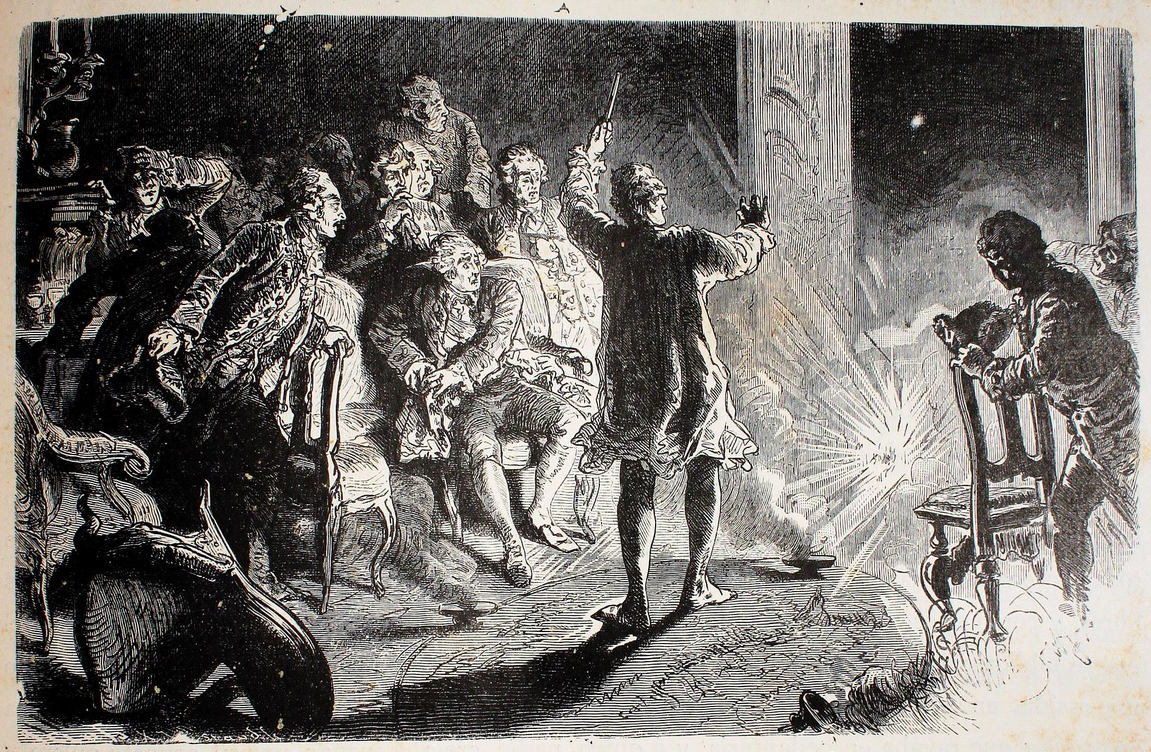
Aided by these adjuncts he was a great success in Paris whither he returned in 1785. As an impostor he knew his business and played “the game” well. When he was at work he brought to bear the influence of all his “properties,” amongst them a tablecloth embroidered with cabalistic signs in scarlet and the symbols of the Rosy Cross of high degree; the same mysterious emblems marked the globe without which no wizard’s atelier is complete.
Here too were various little Egyptian figures—“ushabtui” he would doubtless have called them had the word been in use in his day. From these he kept his dupes at a distance, guarding carefully against any discovery. He evidently did not fear to hurt the religious susceptibilities of any of his votaries, for not only were the crucifix and other emblems of the kind placed amongst the curios of his ritual, but he made his invocation in the form of a religious ceremony, going down on his knees and in all ways cultivating the emotions of those round him. He was aided by a young woman whom he described as pure as an angel and of great sensibility. The said young person kept her blue eyes fixed on a globe full of water. Then he proceeded to expound the Great Secret which he told his hearers had been the same since the beginning of things and whose mystery had been guarded by Templars of the Rosy Cross, by Magicians, by Egyptians and the like. He had claimed, as the Comte Saint-German said, that he had already existed for many centuries; that he was a contemporary of Christ; and that he had predicted His crucifixion by the Jews. As statements of this kind were made mainly for the purpose of selling the elixir which he peddled, it may easily be imagined that he did not shrink from lying or blasphemy when such seemed to suit his purpose. Daring and recklessness in his statements seemed to further his business success, so prophecy—or rather boastings of prophecy after the event—became part of the great fraud. Amongst other things he said that he had predicted the taking of the Bastille. Such things shed a little light on the methods of such impostors, and help to lay bare the roots or principles through which they flourish.
After his Parisian success he made a prolonged tour in France. In la Vendée he boasted of some fresh miracle—of his own doing—on each day; and at Lyons the boasting was repeated. Of course he occasionally had bad times, for now and again even the demons on whose acquaintance and help he prided himself did not work. In London after 1772, things had become so bad with him that he had to work as a house painter under his own name. Whatever may have been his skill in his art this was probably about the only honest work he ever did. He did not stick to it for long however, for four years afterwards he lost three thousand pounds by frauds of others by whom he was introduced to fictitious lords and ladies. Here too he underwent a term of imprisonment for debt.
Naturally such an impostor found in Freemasonry, which is a secret cult, a way of furthering his ends. With the aid of his wife, who all through their life together seems to have worked with him, he founded a new branch of freemasonry in which a good many rules of that wonderful organisation were set at defiance. As the purpose of the new cult was to defraud, its net was enlarged by taking women into the body. The name used for it was the Grand Egyptian Lodge—he being himself the head of it under the title of the Cophte and his wife the Grand Priestess. In the ritual were some appalling ceremonies, and as these made eventually for profitable publicity, the scheme was a great success—and the elixir sold well. This elixir was the backbone of his revenue; and indeed it would have been well worthy of success if it had been all that he claimed for it. Dispensers of elixirs are not usually backward in proclaiming the virtues of their wares; but in his various settings forth Cagliostro went further than others. He claimed not only to restore youth and health and to make them perpetual, but to restore lost innocence and effect a whole moral regeneration. No wonder that he achieved success and that money rolled in! And no wonder that women, especially of the upper classes, followed him like a flock of sheep! No wonder that a class rich, idle, pleasure-loving, and fond of tasting and testing new sensations, found thrilling moments in the great impostor’s mélange of mystery, religion, fear, and hope; of spirit-rapping and a sort of “black mass” in which Christianity and Paganism mingled freely, and where life and death, good and evil, whirled together in a maddening dance.
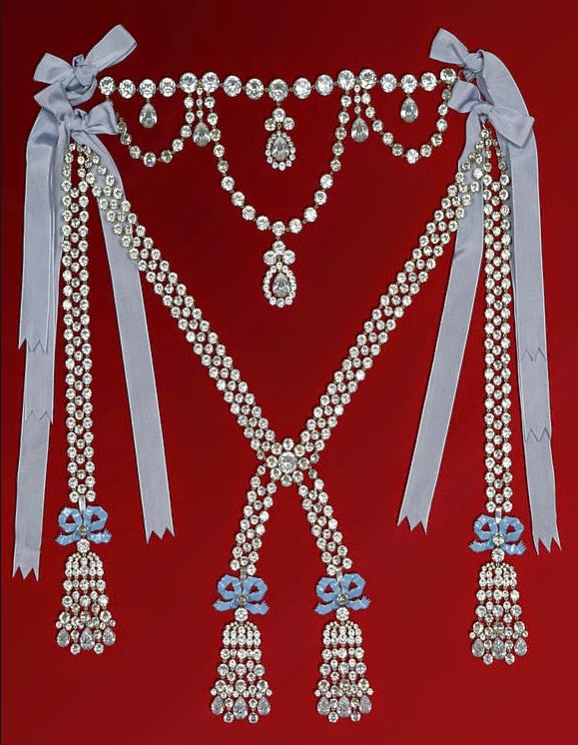
It was not, however, through his alleged sorcery that Cagliostro crept into a place in history; but by the association of his name with a sordid crime which involved the names of some of the great ones of the earth. The story of the Queen’s Necklace, though he was acquitted at the trial which concluded it, will be remembered when the vapourings of the unscrupulous quack who had escaped a thousand penalties justly earned, have been long forgotten. Such is the irony of history! The story of the necklace involved Marie Antoinette, Cardinal Prince de Rohan, Comte de la Motte—an officer of the private guard of “Monsieur” (the Comte d’Artois), his wife Jeanne de Valois, descended from Henry II through Saint-Remy, his natural son and Nicole de Savigny. Louis XV had ordered from MM. Boemer et Bassange, jewellers91 to the Court of France, a beautiful necklace of extraordinary value for his mistress Madame du Barry, but died before it was completed. The du Barry was exiled by his successor, so the necklace remained on the hands of its makers. It was, however, of so great intrinsic value that they could not easily find a purchaser. They offered it to Marie Antoinette for one million eight hundred thousand livres; but the price was too high even for a queen, and the necklace remained on hand. So Boemer showed it to Madame de la Motte and offered to give a commission on the sale to whoever should find a buyer. She induced her husband, Comte de la Motte, to join with her in a plot to accomplish the sale. De la Motte was a friend of Cagliostro, and he too was brought in as he had influence with the Cardinal Prince de Rohan whom they looked on as a likely person to be of service. He had his own ambitions to acquire influence over the queen and use her for political purposes as Mazarin had used Anne of Austria. De Rohan was then a man of fifty—not considered much of an age in these days, but the Cardinal’s life had not made for comparative longevity. He was in fact something of that class of fool which has no peer in folly—an old fool; and Jeanne de la Motte fooled him to the top of his bent. She pretended to him that Marie Antoinette was especially friendly to her, and shewed him letters from the queen to herself all of which had been forged for the purpose. As at this time Madame de la Motte had borrowed or otherwise obtained from the Cardinal a hundred and twenty thousand livres, she felt assured he could be used for the contemplated fraud. She probably had not ever even spoken to the queen but she was not scrupulous in such a small matter as one more untruth. She finally persuaded him that Marie Antoinette wished to purchase the necklace through his agency, he acting for her and buying it in her name. To aid in the scheme she got her pet forger, Retaux de Vilette, to prepare a receipt signed “Marie Antoinette de France.” The Cardinal fell into the trap and obtained the jewel, giving to Boemer four bills due successively at intervals of six months. At Versailles de Rohan gave the casket containing the necklace to Madame de la Motte, who in his presence handed it to a valet of the royal household for conveyance to the queen. The valet was none other than the forger Retaux de Vilette. Madame de la Motte sent to the Cardinal a letter by the same forger asking him to meet her (the queen) in the shrubbery at Versailles between eleven o’clock and midnight. To complete the deception a girl was procured, one Olivia, who in figure resembled the queen sufficiently to pass for her in the dusk. The meeting between de Rohan and the alleged queen was held at the Baths of Apollo—to the deception and temporary satisfaction of the ambitious churchman. When the first instalment for the purchase of the necklace was due, Boemer tried to find out if the queen really had possession of the necklace—which had in the meanwhile been brought to London, it was said, by Comte de la Motte. As Boemer could not manage to get an audience with the queen he came to the conclusion that he had been robbed, and made the matter public. This was reported to M. de Breteuil, Master of the King’s household, and an enemy of de Rohan. De Breteuil saw the queen secretly and they agreed to act in concert in the matter. Louis XVI asked for details of the purchase from Boemer, who told the truth so far as he knew it, producing as a proof the alleged receipt of the queen. Louis pointed out to him that he should have known that the queen did not sign after the manner of the document. He then asked de Rohan, who was Grand Almoner of France, for his written justification. This being supplied, he had him arrested and sent to the Bastille. Madame de la Motte accused Cagliostro of the crime, alleging that he had persuaded de Rohan to buy the necklace. She was also arrested as were Retaux de Vilette, and, later on at Brussels, Olivia, who threw some light on the fraud. The King brought the whole matter before Parliament, which ordered a prosecution. As the result of the trial which followed, Comte de la Motte and Retaux de Vilette were banished for life; Jeanne de la Motte was condemned to make amende honourable, to be whipped and branded with V on both shoulders, and to be imprisoned for life. Olivia and Cagliostro were acquitted. The Cardinal was cleared of all charges. Nothing seems to have been done for the poor jewellers, who, after all, had received more substantial injury than any of the others, having lost nearly two million livres.
After the affair of the Necklace, Cagliostro spent a time in the Bastille and when free, after some months, he and his wife travelled again in Europe. In 1789 he was arrested at Rome by order of the Inquisition and condemned to death as a Freemason. The punishment was later commuted to perpetual imprisonment. He ended his days in the Château de Saint-Leon near Rome. His wife was condemned to perpetual seclusion and died in the Convent of Sainte-Appolive.
